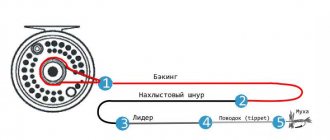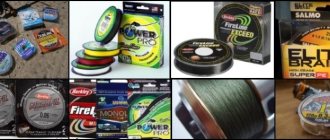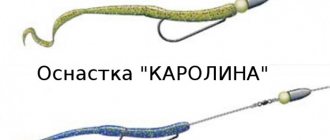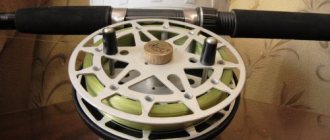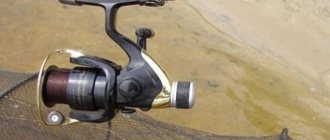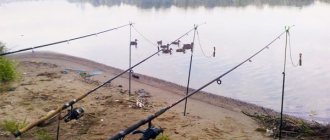As an epilogue to the article, one is tempted to put Shakespeare’s words - “To be or not to be? That is the question?" After all, the problem of using fasteners and, moreover, leashes in Ultralight is one of the most controversial even among experienced ultralight spinning anglers. The arguments of supporters of one point of view or another are supported by personal experience and good arguments, but... things are still there. But the whole point is that there cannot be an unambiguous solution - there are both positive and negative aspects.
So with a leash or without a leash on an ultralight?
Let's start with the leash, which raises the most questions. On the one hand, fanatical fans of ultralight spinning rods do not accept the leash as a class: in their opinion, with it the harmony of ultralight tackle is grossly violated.
On the other hand, not everyone is ready to lose expensive bait for the sake of peace of mind. If the dear reader is interested in my personal opinion, I can say that I often use the leash in the ultralight. But not without looking back! When fishing is carried out in clear water, I put a leash only in cases where it is very possible to catch a pike, especially a small one that is always active. But often, alas, you have to do this after biting the bait...
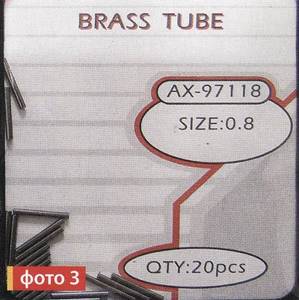
Of course, using a leader negatively affects the number of fish caught. But its absence can affect the quality of the catch - the specimens will be significantly larger, and the species composition will seriously expand. Probably, someone will say that this is a matter of chance and the stars just coincided if the fisherman, removing the leash from the rig, immediately got a bite of the long-awaited trophy. I agree, but only when this case is an isolated one. But when this situation is repeated more than once or twice, and not only with you, it’s worth thinking about. This reminds me very much of almost mirror cases when replacing a thin braided cord with fluorocarbon the result does not take long to arrive.
Wiring equipment with a branch lead
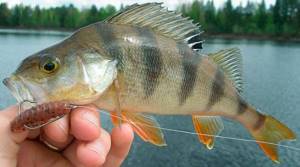
Fishing with a retractable leash allows the spinner to use different leads: stepped, uniform and Stop and Go, but still the main wiring for equipment with a retractable leash is stepped.
When retrieving, a rig with a retractable leash does not drag along the bottom, but goes at a certain distance from the bottom, which makes the bait clearly visible to a predator.
In some cases, dragging the bait along the bottom, as well as hitting the bottom with the sinker, can be effective; in both cases, clouds of turbidity rise from the bottom, which attract the predator to attack the bait.
When retrieving, the tip of the rod should be kept raised up; when the bait approaches the angler, the tip of the rod can be lowered closer to the water. This position of the rod when retrieving allows the sinker to rise higher from the bottom, thereby attracting a predator from a greater distance.
Leader material in ultralight
Another question: what and how to use as a leash for an ultralight? For fishermen today there is little choice. The bulk of sales in stores are leashes made of leash material. Are they suitable for ultralight?
Not everything, but, of course, you can pick up some and call such leashes conditionally suitable. Why? Many manufacturers like to attach a clasp to such a leash (photo 1), and put a winding ring or swivel on the top loop (photo 2). Imagine (listing in order): a clasp, a leash loop, a crimp tube, the leash itself, another crimp tube, a second leash loop, a winding ring! These are not leashes, but some kind of Frankenstein's monsters! Now let’s imagine a small bait - for example, a two and a half centimeter wobbler, topped with such a “work”. How many large, cautious fish will we be able to catch, which are not at all blind and see in much more detail and sharper than a person? That's it. Even if this leash is considered suitable, it is only when we are in a simply hopeless situation.
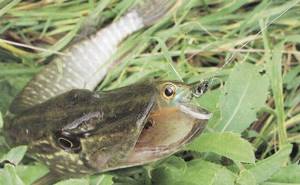
Multi-core leader materials, which manufacturers position as suitable for attaching bait with a simple knot, also, frankly, do not stand up to criticism. At the site of the knot, the leash is deformed, the bait hangs off-axis, which significantly reduces the quality of the “game.” I'm not even talking about small rotating spoons and wobblers, where a strict axial direction is mandatory, otherwise the bait turns into a completely useless and “dead” piece of plastic or metal.

You can make leashes yourself from purchased materials, minimizing the components as much as possible, but this is also not easy. The thing is that for the correct formation of the leash loop you need an element such as a crimp tube (photo 3). It’s not difficult to find them on sale; it’s difficult to find tubes of small diameter to match the specific diameter of the leader material.
Features of catching perch in the spring on turntables
So, you will need an ultralight rod with a test weight of 0 to 5 g and a spinner weighing 2 g. The main thing is that it is working. The installation of the gear is usual: a cord, that is, a braided fishing line, a snap hook and a spinner, so there’s not much to tell here.
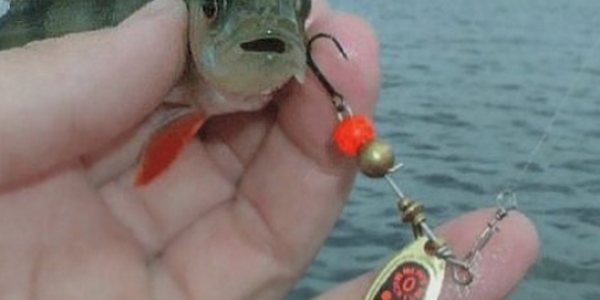
It is necessary to pay attention to the fact that when fishing with light baits, the risk of the formation of a so-called beard increases significantly, so it is necessary to ensure that after casting there is no loop on the reel, otherwise the next cast may end up with a tangled cord. Wiring when working with turntables is uniform, but the speed of rotation of the coil must be adjusted depending on the depth at which you plan to do the wiring.
String leash for ultralight
And then homemade leashes made of steel mono strings (which are without winding) for musical instruments enter the arena. Why string? Yes, you can also use wire whose properties are similar. But finding such wire is a task, and string - here it is - is not in great short supply in specialized stores. No matter who gives what arguments, this is apparently the only material today that, with the right approach, can be turned into excellent leashes for ultralight baits.

Experienced fishermen have long adapted to making them at home. I myself have walked this whole path - and I can say with full responsibility that making a good ultralight leash is not an easy task. One of the advantages of making it yourself is the ability to make leashes of any size, even strictly tied to a specific size of ultralight bait.
The rule that the leash should be approximately the same length as the bait itself, although somewhat controversial, in principle reflects the general trend. However, with ultralight baits less than 30 mm in size, this postulate is unsuitable - it is advisable to increase the leash by one and a half times.
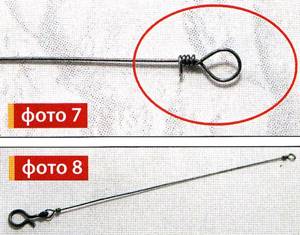
Here I would like to talk about the relationship between the size of the bait and the bites of pike of different sizes, which is directly related to the length of the leash. So, I think that the overwhelming majority of fans of ultralight fishing have noted in their practice such moments when a pike of about 3-4 kilograms, which had already seen enough in its lifetime, was not averse to trying a tiny bait. And, as a rule, she did this with the very edge of her mouth. It’s hard to say what motivates her at the moment; I think it’s not hunger, but most likely elementary curiosity. It is unlikely that the pike hopes to seriously fill its stomach with protein and certainly does not compensate with this small fry for the energy costs that went into pursuing, throwing and returning to the starting point of the ambush.
But if the ultralight bait passes in an area that is dangerous for any food item of the pike, it will not miss the opportunity to take an interest in the beautiful toy. How many times have I seen pike not react at all to a micro-bait passing literally thirty centimeters from the parking lot. But the shift of the wiring almost close to the ambush forced the pike to still take an interest in the annoying object - and bite the annoying little thing, so to speak, for testing. That is why, with skill and a cool head, it is possible to bring out these monsters using thin tackle and the smallest bait.
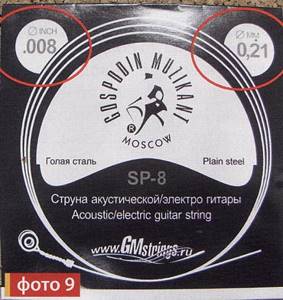
But how does everything change in the behavior of the pike when a bait appears, which in size corresponds to the size of the food object that is usual for it? That prey that will not only provide energy replenishment, but will also allow what is eaten to be converted into height and weight, and therefore such a moment must not be missed in any case - and the prey must be caught and eaten at all costs. That’s why there are such greedy bites on large baits, that’s why the bait is so deep in the pike’s mouth.
Now let’s imagine, instead of a seasoned pike, a small “lace” of about 200 - 300 grams. Our 3 cm wobbler is the long-awaited food item, after swallowing which the small predator will be completely satisfied! And as in the previous case, the prey should not be missed. And therefore, with all the “proletarian power” characteristic of him, he greedily attacks the object of his desire. And our miniwobbler is deep in the mouth (photo 4). And the absence of a leash in 99% of cases will lead to the loss of the bait and the death of the pike, because... she will no longer be able to get rid of the wobbler on her own, which means she will no longer be able to eat properly.

The second point is the “sight” of the little “crocodile”. It has not yet been adjusted, like its older brothers, and therefore it often misses, bumping into the fishing line. After all, the pike tries to strike with some anticipation at a moving target. It’s like with game hunters, when for a 100% hit you need to shoot several body lengths ahead of the flying bird. And the attacking little bee cuts any “vein” once or twice. It is especially dangerous if the bait does not go away from the ambush, but directly towards the pike.
Ask any angler, which pike is the most dangerous in terms of cutting line? I think most people will note pike in size up to a kilogram, and fans of ultralight fishing – generally up to half a kilogram.
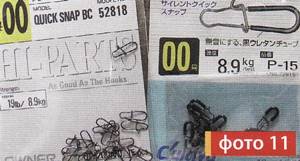
So what's the conclusion? Well, pike are everywhere! Even if it is not there, it is still there! And speaking from the lips of the medical staff, the patient will live if modern treatment methods and medications are applied to him. This means that if there is even a small chance of getting sick, then timely vaccination can preserve health. It is clear that the bait plays the role of the patient, the leash takes on the role of vaccination, and the role of painful manifestations is assigned to the pike.
Retractable leash for pike perch
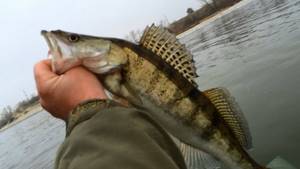
For catching pike perch using a retractable leash, it is best to mount equipment with a triple swivel.
The leash from the swivel to the bait is best made from fluorocarbon fishing line, the diameter of the fishing line should be about 0.3 mm, the length of the leash should be from 70 to 120 cm, depending on the fishing conditions. The length of the fishing line from the swivel to the sinker is from 40 to 70 cm.
The best wiring for catching pike perch on a retractable leash is a stepped wiring, in which the sound of the sinker hitting the bottom is very important.
Types of string leashes for ultralight
I have already said that I make leashes myself, two types are shown in photo 5. The main difference between them is in the design of the end loops. Such end loops are called the more than capacious word “twist”: it fully reflects the principle of creating a loop for attaching bait (photo 6, a and b).
Now - directly about the leashes for ultralight. The first leash (photo 5a) is a design with two “twists”. A very popular model. And now I’ll explain why. But first, pay attention to photo 5b. Do you see how one loop is “blind” and the second is “twisted”?

Looks much more aesthetically pleasing. But the problem lies precisely in the “deaf” loop. Making it is not as easy as it seems. If, after we have formed a loop, we bite off the excess tip with pliers, then there will still be a protruding fragment (photo 7), which not only can easily injure your fingers, it also clings to the “braid”, filamentous algae, etc. Here you need a certain skill and effort to fix this fragment flush with the main string. That’s why leashes with two “twists” have taken root so much – there’s an order of magnitude less hassle.
The third type of leash is two blind “twists”, on one of which a fastener is placed (photo 8). Widely used in fly fishing for attaching fairly large “nymphs”, streamers, etc., such fasteners are no less popular among anglers using ultralight spinning rods. But about the fasteners themselves a little later - in the appropriate section.
The option with two “blind” loops and a clasp is far from common. Again due to problems with the “blind” loop. And then - the twist is no less, if not more reliable, than, in fact, the fastener itself. Another question is how many turns to make for reliable fastening and what thickness of string to use for ultralight? For these introductory ones are inextricably linked.
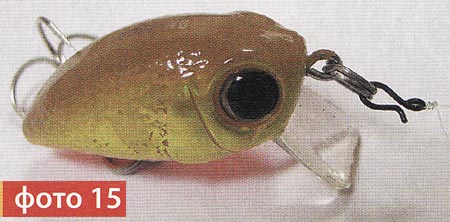
Let’s discard the conversation about the notorious “first” and “second” strings right away; we will determine their diameter not in numbers, but as expected - in millimeters, because for different musical instruments the thickness of the strings is also different. Otherwise, it turns out that we take these very “first” and “second” strings with diameters of 0.3 and 0.4 mm, respectively, and this is insanely large for our ultralight baits and thin equipment. Plus serious unmasking. Pike, by and large, don’t care, but the rest of the fish don’t care at all. Because the thinner the leash, the better. However, we cannot reduce the cross section indefinitely.
To make ultralight leads, I use strings intended for acoustic guitar. The manufacturer is not important. For me personally, at first, the convenience was that the diameter on the packaging was indicated in both inches and millimeters (photo 9). I advise you not to use wire thinner than 0.008 inch (this is about 0.21 mm). Believe me, it is quite thin. I even conducted an experiment and showed it to some anglers asking them to determine the diameter without a measuring tool. Literally only a few were able to give an almost correct answer about the actual thickness. When the majority of colleagues settled on the value of 0.15 mm. And only after measuring it with a micrometer was I somewhat discouraged by the real cross-section.

For larger baits, for example, minnow-class wobblers measuring about 45 mm, you can use a string of 0.009 inch (0.24 mm) and occasionally - 0.010 inch (0.28 mm).
There is a little-known rule that the more obtuse angle we set for the “twist” during manufacturing, the fewer revolutions can be used. And vice versa. But still there should be at least five of them. But there is also a downside: unraveling the “dumb twist” to change the bait is much more difficult. If the angle is sharper, then there should be at least seven revolutions. Yes, it will be a couple of millimeters larger, but working with such a leash is much more comfortable. So the final choice, as always, is entirely yours.
Jig leash for fishing in snags
If the object of our hunt is pike perch, chub, asp, and not just pike and perch, such a leash is justified. It can be made from fluorocarbon for shock leaders with a diameter of 0.4 mm. The length can be up to half a meter. It must be tied to the main line with special knots: “Albright”, “carrot”, etc. I always use the “Albright” knot. Moreover, it can be used with both braided and monofilament fishing lines. When tying with braid, I make 14 turns and 2 locking knots; for monofilament fishing line, 7 turns and 1 locking knot are enough.
I tie the fittings with a rapala knot that I perfected.
I step back 10–15 cm and tie a simple knot without tightening it to the end, and then I thread the end through the swivel and, folding the line in half, rotate it with the fingers of both hands in one direction. It turns out to be a nice braid. Then everything is done according to the classics: I thread the end into the loop of the knot, wrap it around the main line 4 times and, threading the end into the same loop from the opposite side, finally tighten the knot. If you use the Rapala knot, tying its modernized version will be easy. When tightening, I pull the tail down so that during the fishing process it does not catch the grass.
Ultralight fasteners
At the moment, the problem of choice is no longer relevant, and the assortment in stores is more or less established. Ultralight uses many types of fasteners, but let’s not worry and focus on the main three. The first model (photo 10) is the most popular self-tightening fastener for ultralight. Under a powerful, destructive load, such a fastener, deformed, stretches, but does not unfasten - with very rare exceptions (apparently, the matter is both in the design itself and in the quality of the wire, more precisely, its springing properties). We will choose the smallest models. For example, Owner series 52818 or P-15, size 00 (photo 11). The wire here would also like to be spring-loaded, but, in any case, these are one of the smallest and more or less accessible fasteners.
The second model (photo 12) is the previously mentioned fly fastener. In addition to several sizes, I was able to try round and teardrop-shaped ones. If we are more or less familiar with the round shape: more than once (due to its unavailability in retail sales) we had to remove such fasteners from chains, which are widely used for pendants in winter lures, then my acquaintance with the teardrop-shaped one took place only three years ago. But first, about the round ones. Round ones (photo 13 a) are produced mainly by Mustad. The quality is very uneven. I have had several cases when such a fastener unbent on a fish. I would like to use wire that is more reliable, and that the batches would be of the same quality as predicted. The second model in the photo is in the form of a drop (photo 13 b). The manufacturer is a little-known North American company Kipper. This year we managed to get all 4 sizes (photo 14) - just in case. The quality is excellent.
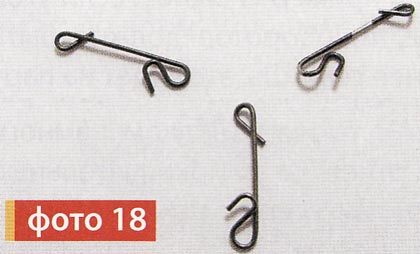
Such fasteners and space on the equipment take up minimal space and look more than aesthetically pleasing. Especially the drop-shaped ones (photo 15). Another thing is that removing the bait from them is a real hassle; here it is better to use thin tweezers. Although, to be honest, I have gotten used to doing without auxiliary tools.
And the third option is a homemade clasp (photo 16). It is a greatly reduced length version of a string leash. And it is made from the same material. Occurs infrequently. Firstly, due to a certain complexity of manufacturing. And secondly, the base of such a fastener is slightly enlarged due to twisting. But this is a conscious price to pay for reliability.
I would like to note the homemade “self-tightening” of Andrei Akimov, who is well-known in narrow circles of fishermen. Unfortunately, I only have a couple of them left (photo 17). On the left, for comparison, is a clasp from Owner. We will have to insist on replenishing the supply.
